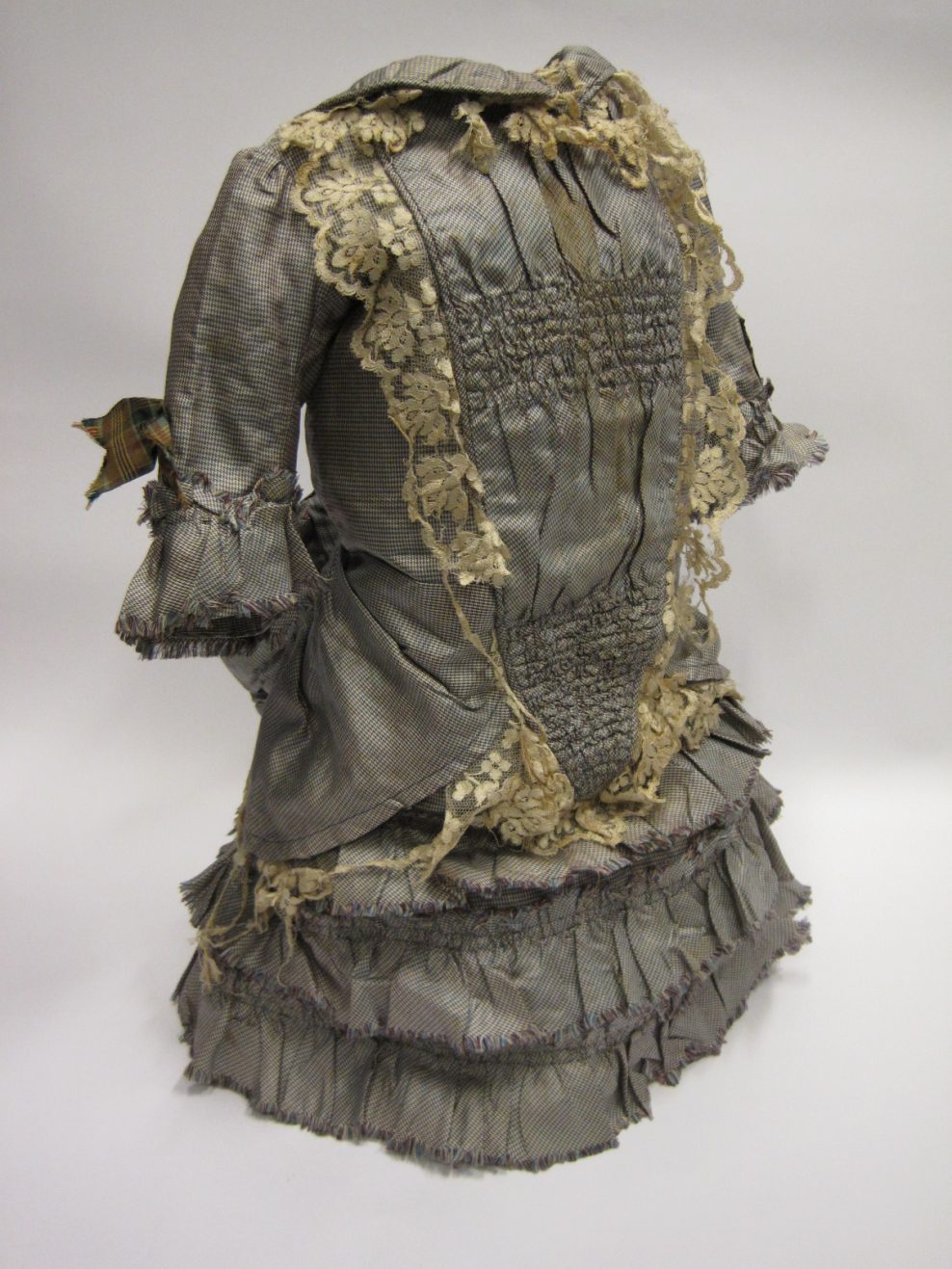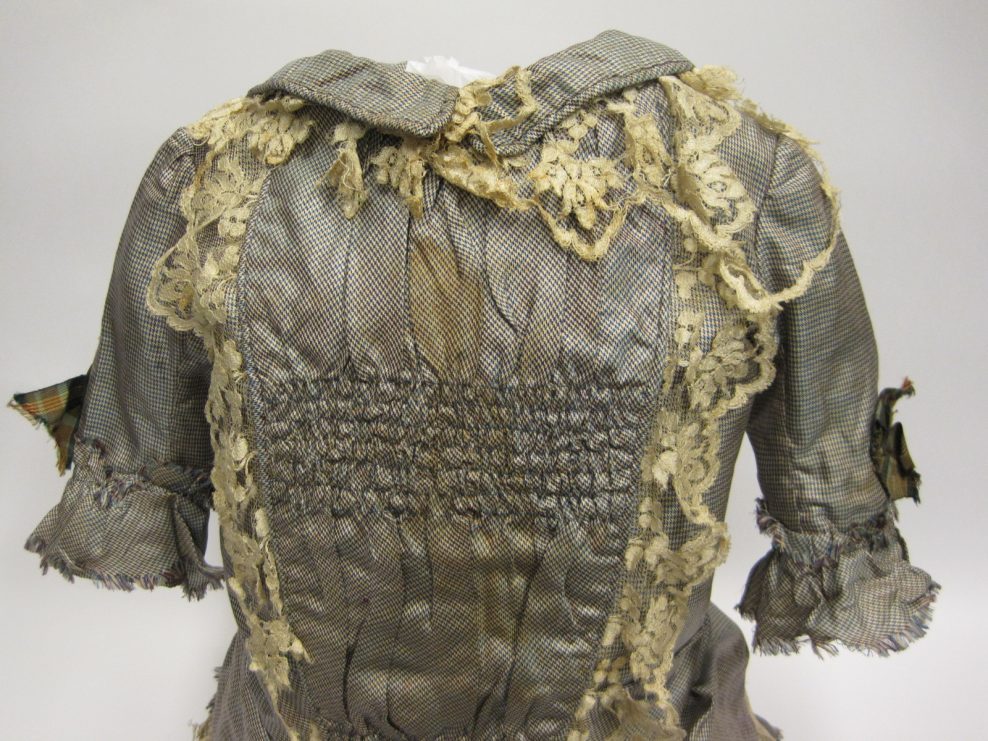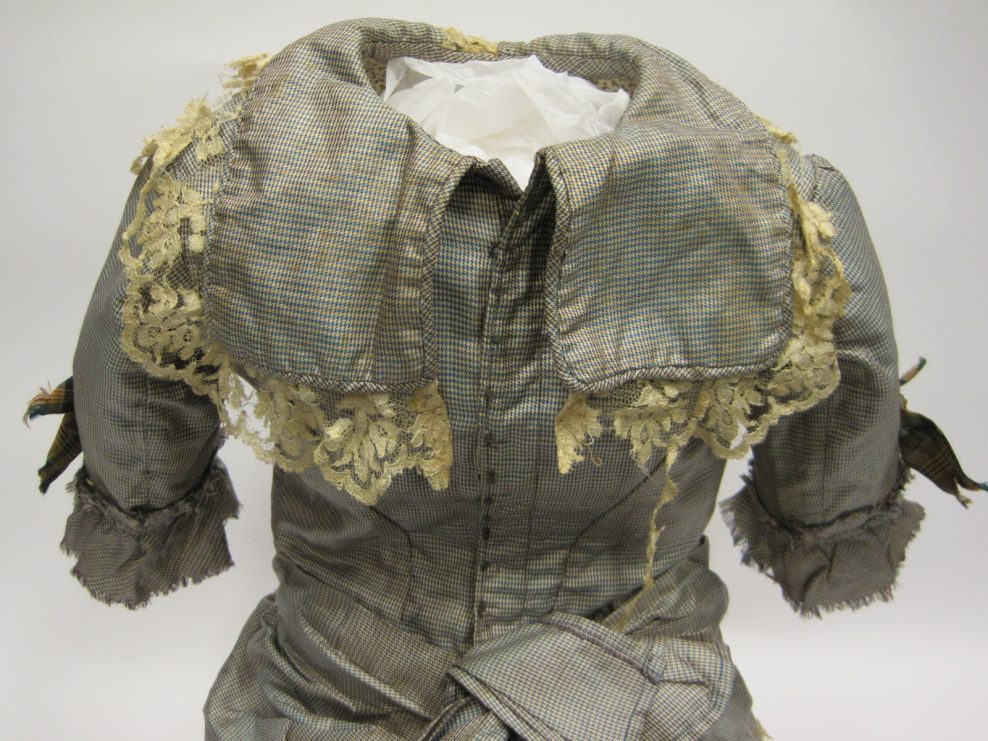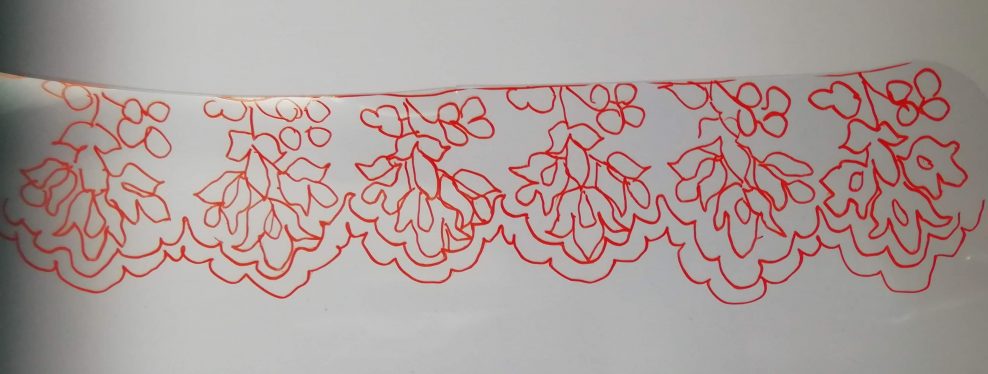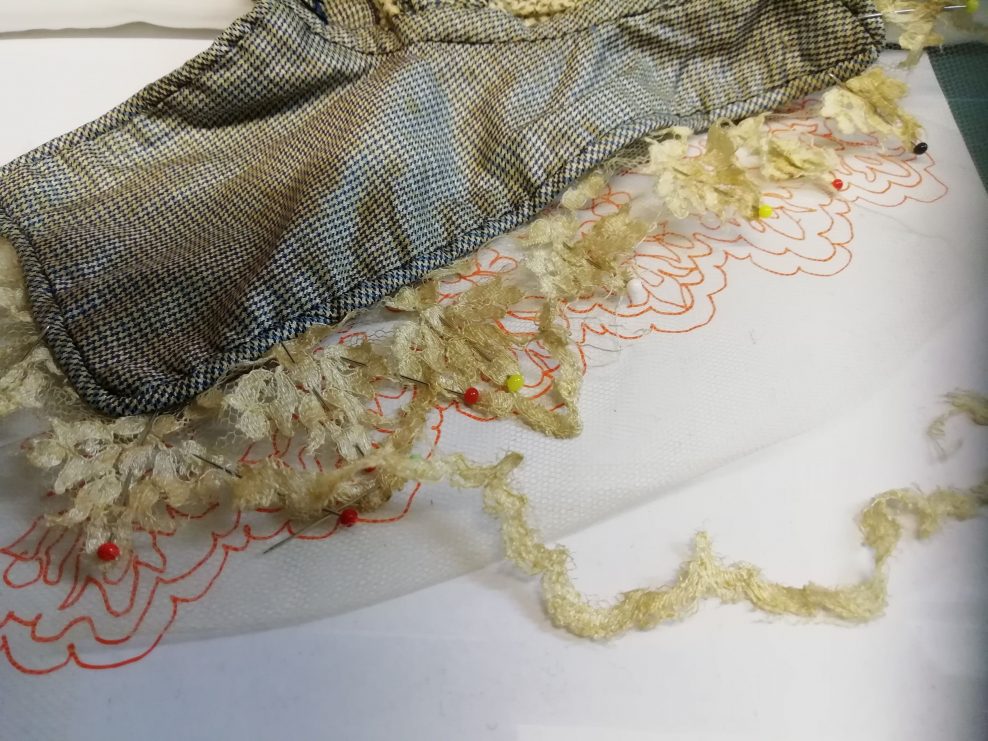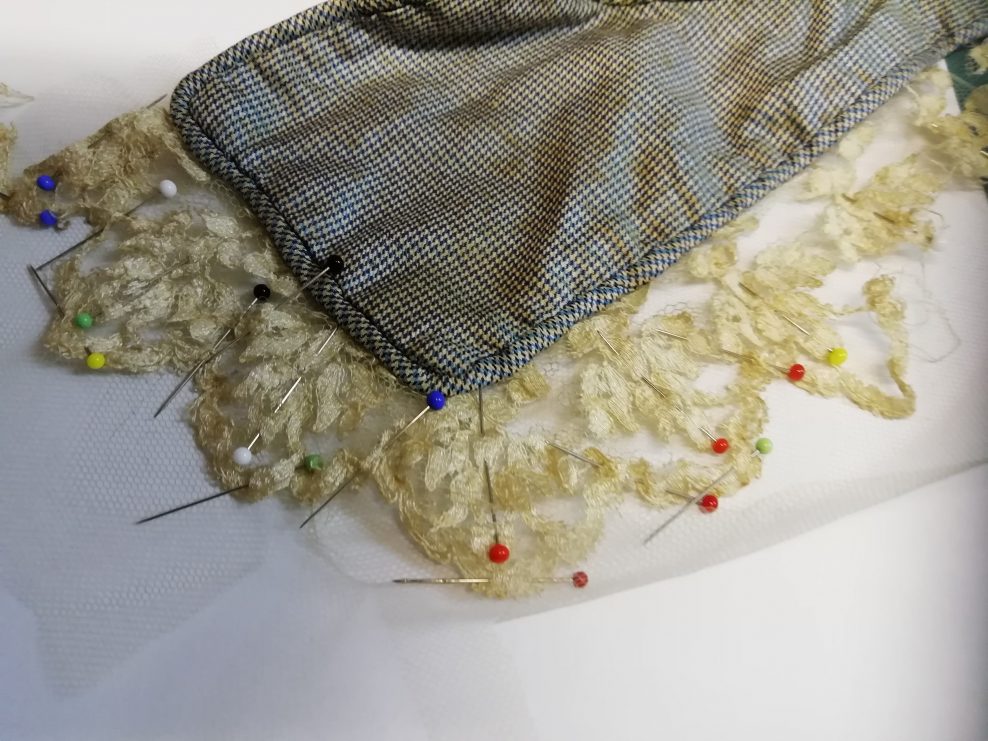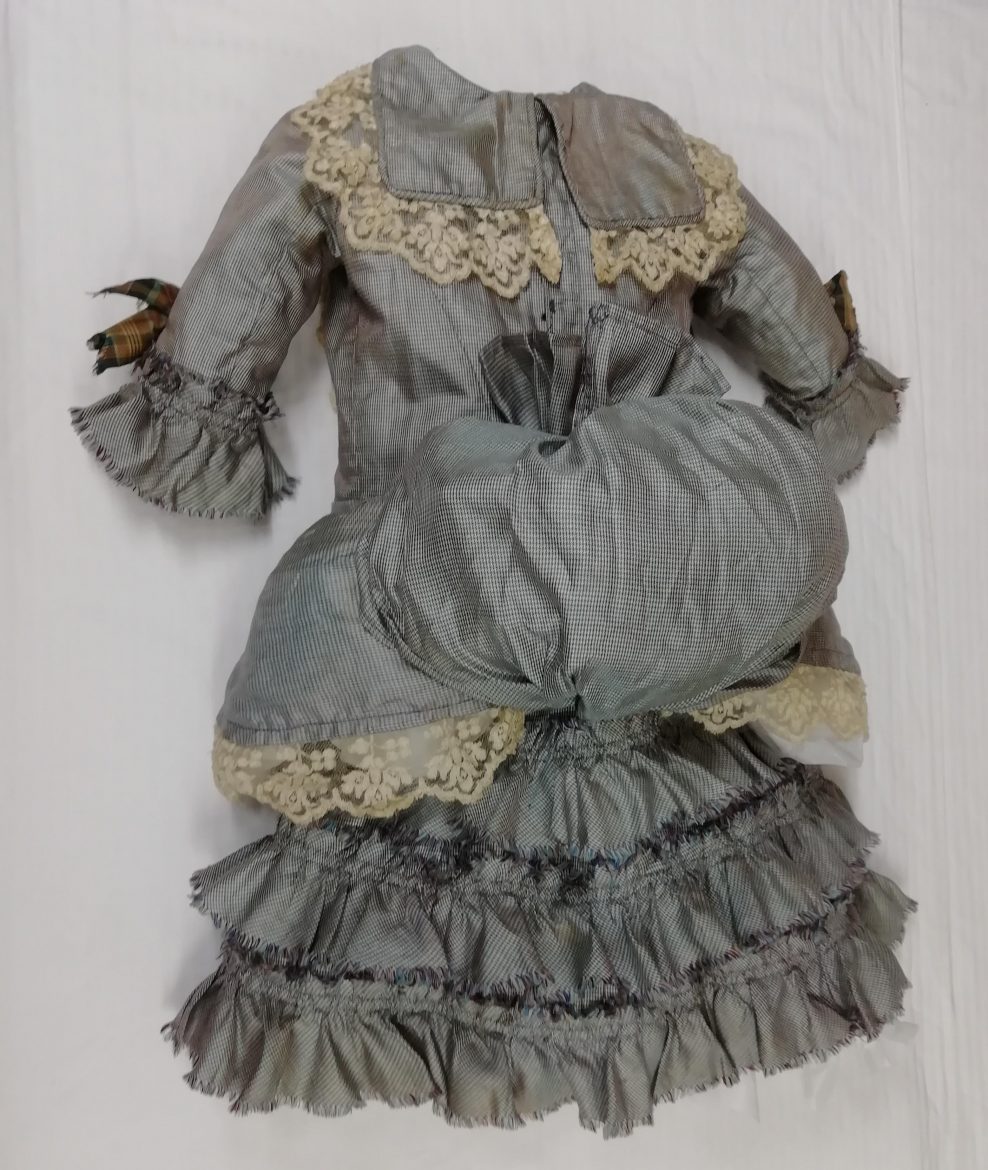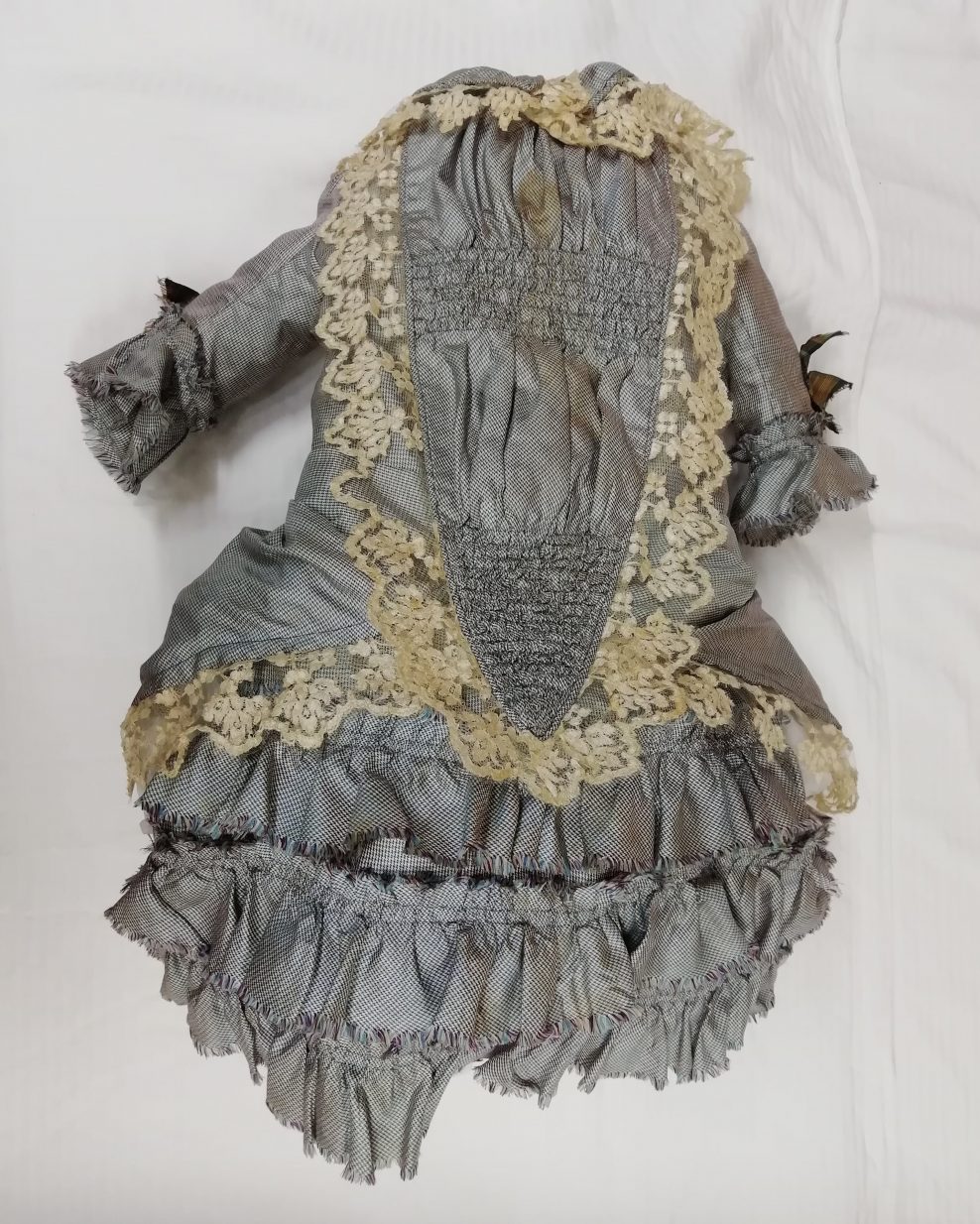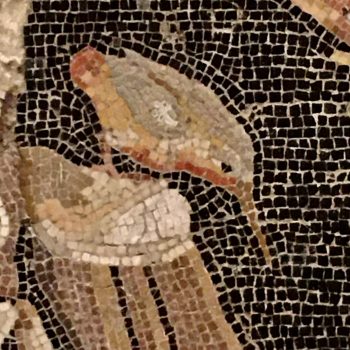Projects
1870s Child’s dress from Swansea Museum
A child’s dress from the 1870s, part of the costume collection of Swansea Museum, was needed for display in the Museum’s galleries. An attractive item, the dress was largely in sound condition apart from damage to its lace trim. A fine gauge net backing was used to support the fragmentary lace so that the garment could be safely displayed and enjoyed.
A child’s dress made from silk fabric in a mauve, blue and white dog-tooth pattern. It measures approximately 57 cm from neck to hem and is a scaled-down version of a fashionable dress of the 1870s, with ruched cuirass-style bodice, a sailor suit-style collar and three gathered tiers of frills on the skirt. The sleeves are elbow length, again finished with a frill. A small bustle, formed from fabric swagged round from the waist front, sits at hip level. The frills are made from unfinished, deliberately frayed, strips of fabric. The bodice back fastens with black-painted metal hooks, which hook into hand-worked eyelet holes, and which may be later additions to the dress. The dress is lined with printed cotton fabric and has both hand and machine stitching. The collar, the edge of the cuirass bodice and the swagged fabric terminating in the bustle are trimmed with lace.
The main fabrics of the dress were in good condition. There was a brown stain on the ruched portion of the bodice front; the dress was lightly soiled overall, and the fabrics were creased. The lace was in poor condition: it was torn in many places and several portions were missing altogether.
The brief was to clean and conserve the dress for permanent display in Swansea Museum.
Surface cleaning
The dress was surface cleaned with low powered vacuum suction to remove loose, particulate soiling.
Supporting
It was decided to support the lace before wet cleaning, as some elements of the lace pattern were very fragmentary, and their condition might worsen if they were allowed to float free in the wash bath.
A tracing of an intact section of the lace was taken to act as a guide to reconstruction of the damaged portions.
A strip of dyed fine gauge nylon net was sewn in place to the dress behind each length of lace. The lace was pinned to the net, using the tracing to help to place fragmentary elements in their correct positions. The main motifs were sewn to the net with running stitches worked in dyed mercerised cotton thread. In places where the outline thread was missing from the motifs, mercerised cotton thread was used to oversew the motifs in place. Damaged portions of the original ground mesh were sewn to the support net with fine dyed polyester thread.
A loose metal hook at the collar edge of the back opening of the dress was oversewn in place with dyed polyester thread. The same thread was used to work a buttonholed thread bar corresponding to the hook on the opposite collar edge.
Wet cleaning
Once the lace had been secured, the dress was wet cleaned in deionised water and Dehypon LS45 non ionic surfactant. The dress was blotted dry, padded out with crumpled nylon net and dried with the aid of fans. The creased areas of the fabrics were manipulated smooth during the drying process.
After wet cleaning, the staining to the front of the bodice is still clearly visible, but the creases in the fabric are much reduced. The lace is well supported and the areas of loss don’t detract from the overall impact of the dress, which has been put on display in Swansea Museum.
